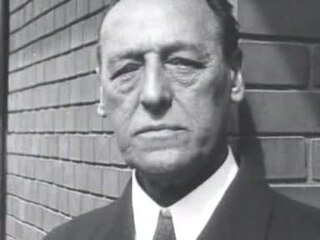Plot
In the first segment, Willem the Silent (Jan van Dommelen) and the Van Brederode are demanding freedom of religion for the repressed Dutch citizens with governor Margaret of Parma (Christine van Meeteren). Charles de Berlaymont, sharing the opinion with Willem the Silent, opposes the Spanish dictation and introduces the 'honorary title' Geuzen. Together with his men, he swears 'Death or Freedom'. Meanwhile, Balthasar Gérard (Theo Frenkel), an admirer of Willem the Silent's enemy Philip II of Spain, unexpectedly assassins Willem the Silent.
The second segment features Pieter Corneliszoon Hooft, as he performs at his Muiderslot. In the following, Maurice of Nassau, Prince of Orange (Charles Gilhuys) battles for the Netherlands' independence. The fourth segment includes Kenau Simonsdochter Hasselaer during the Siege of Haarlem. Next is the Siege of Breda, where one of the soldiers gets heavily ill, while a battle with the Spanish is near. The continuing is a description of the siege, ending with the capture of Breda.
The following segment involves the escape of Hugo Grotius from Loevestein via a casket, organized by his wife (Mientje Kling) and a maid. Then comes the Siege of 's-Hertogenbosch by Frederick Henry, Prince of Orange (Willem Roemer). In an interlude, Rembrandt, Frans Hals and Jan Steen are seen in different scenes creating a painting. What comes after is a wedding taking place between Kloris and Roosje.
In a bigger story, John William Friso, Prince of Orange (Marcel Mijin) is in Taisnières-sur-Hon to fight the Battle of Malplaquet. Subsequently, Michiel de Ruyer (Jan Buderman) and Maarten Tromp (Jan Holtrop) end their struggle after a long fight through help from William III of England (Louis van Dommelen). Attention then shifts to stadthouder William IV, Prince of Orange, followed by William V, Prince of Orange. Their crown was taken over by Louis Bonaparte. The film ends with William I of the Netherlands' (Jan van Dommelen) arrival in Scheveningen and his oath to the constitution.

John William Friso became the (titular) Prince of Orange in 1702. He was the Stadtholder of Friesland and Groningen in the Dutch Republic until his death by accidental drowning in the Hollands Diep in 1711. From 1938 to 2022, Friso and his wife, Marie Louise, were the most recent common ancestors of all then-reigning European monarchs. As of 2023, the most recent common ancestors of all currently-reigning European monarchs are Louis IX, Landgrave of Hesse-Darmstadt and his wife Countess Palatine Caroline of Zweibrücken.

The naval Battle of Texel or Battle of Kijkduin took place off the western coast of the island of Texel on 21 August 1673 between the Dutch and the combined English and French fleets. It was the last major battle of the Third Anglo-Dutch War, which was itself part of the Franco-Dutch War (1672–1678), during which Louis XIV of France invaded the Republic and sought to establish control over the Spanish Netherlands. English involvement came about because of the Treaty of Dover, secretly concluded by Charles II of England, and which was highly unpopular with the English Parliament.

Prince of Orange is a title associated with the sovereign Principality of Orange, in what is now southern France and subsequently held by the stadtholders of, and then the heirs apparent of, the Netherlands.

Louis H. Chrispijn, Sr. was a Dutch actor, writer, and director of both theatre and films. Together with M.H. Laddé, Willy Mullens, Maurits Binger, and Theo Frenkel, he was one of the pioneers of early Dutch cinema.
Ontrouw is a 1911 Dutch silent drama film directed by Louis Chrispijn Jr.
De Bannelingen is a 1911 Dutch silent drama film directed by Léon Boedels and Caroline van Dommelen.
Krates is a 1913 Dutch silent drama film directed by Louis H. Chrispijn.
Silvia Silombra is a 1913 Dutch silent drama film directed by Louis H. Chrispijn.
Heilig recht is a 1914 Dutch silent drama film directed by Louis H. Chrispijn.
De bloemen, die de ziel vertroosten is a 1914 Dutch silent drama film directed by Louis H. Chrispijn and produced by Maurits Binger.
Liefde waakt is a 1914 Dutch silent Western film directed by Louis H. Chrispijn.
Luchtkastelen is a 1914 Dutch silent drama film directed by Louis H. Chrispijn.
De Stradivarus or Zijn viool is a 1914 Dutch silent drama film directed by Maurits Binger and Louis H. Chrispijn.
Weergevonden is a 1914 Dutch silent film directed by Louis H. Chrispijn. It was the first film produced by Hollandia Studios and one of the first Dutch feature films.
De zigeunerin is a 1914 short Dutch silent film directed by Louis H. Chrispijn.
The Fatal Woman is a 1915 Dutch silent drama film directed by Maurits Binger and Louis H. Chrispijn.
De vrouw Clasina is a 1915 Dutch silent drama film directed by Maurits Binger.
Liefdesstrijd is a 1915 Dutch silent drama film directed by Maurits Binger.
The Secret of Delft is a 1916 Dutch black and white silent crime film directed by Maurits Binger. The movie was also sold to France, where it was titled Le Secret du Phare. Only fragments of the original movie survived and are being kept in the Dutch Cinema Museum. It is hoped a complete copy survived in France.
This page is based on this
Wikipedia article Text is available under the
CC BY-SA 4.0 license; additional terms may apply.
Images, videos and audio are available under their respective licenses.



